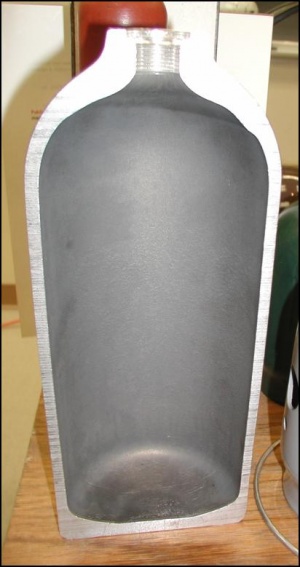Compressed Gases
Types of Cylinders
There are two basic types of compressed gas cylinders.
Non-refillable cylinders are designed for one-time use and should never be refilled or reused.
Refillable cylinders are made of steel or aluminum, and are designed for refilling and repeated use. Some cylinders have been in service for over 40 years! Most refillable cylinders have an open interior with walls of 1/4 inch steel and a reinforced neck and bottom. Because commonly used gases are highly pressurized (between 1,500 psig and 2,500 psig), cylinders must be maintained in good condition and protected from accidental damage at all times.
A compressed gas cylinder that has been accidentally knocked over and damaged at the valve can result in extensive property damage and personal injury. Never attempt to stop a damaged cylinder that is spinning in place due to rapid release of pressurized contents! Leave the area until the contents are dispelled and the cylinder has stopped.
Refillable cylinders also come in three different types. In addition to the standard refillable cylinder described above, the two other types are:
- Acetylene cylinders have a porous filler material that helps stabilize the extremely volatile gas. Acetone is used to stabilize the acetylene, but pockets of pure acetylene can develop at the valve stem if the cylinder is not kept in an upright position, or if the cylinder is dented or damaged. Acetylene is pressurized at 250 psig, but free acetylene is highly unstable at 15 psig. The maximum flow rate on acetylene cylinders is 15 psig. Always keep acetylene cylinders in an upright position! If a cylinder is found that is not in an upright position, put it in an upright position and let it sit for at least 24 hours before using or contact the supplier for guidance.
- Some gases, such as carbon dioxide, are commonly used in both a liquid and gas form. Cylinders designed for such use have a siphon, or "dip", tube. A siphon serves as a drinking straw to pull the liquid from the bottom of the cylinder when needed. The valve pulls the gas vapors from the top of the cylinder when the gas form is required.
